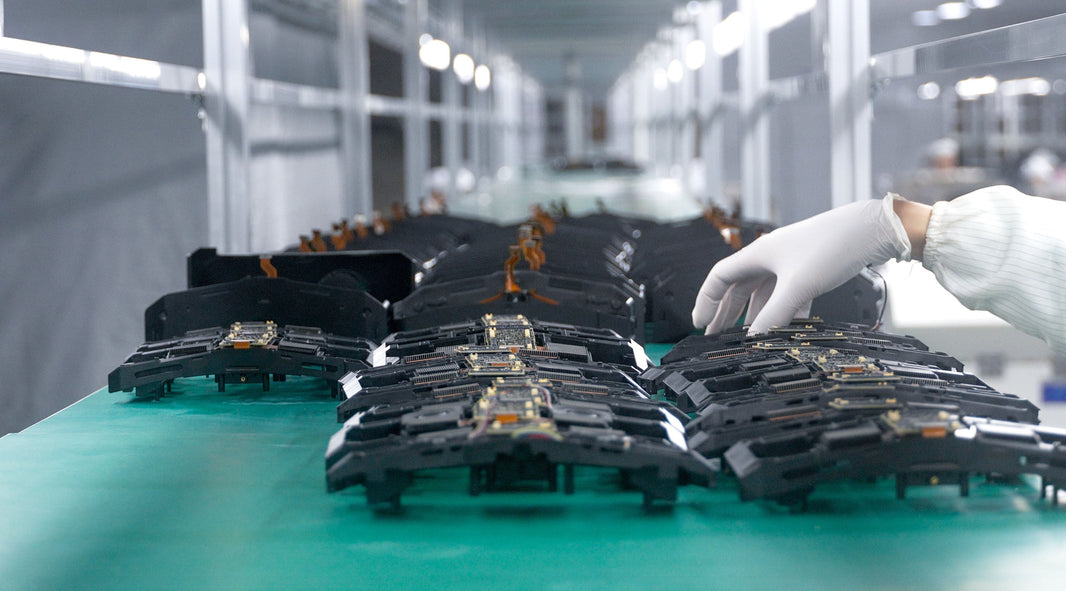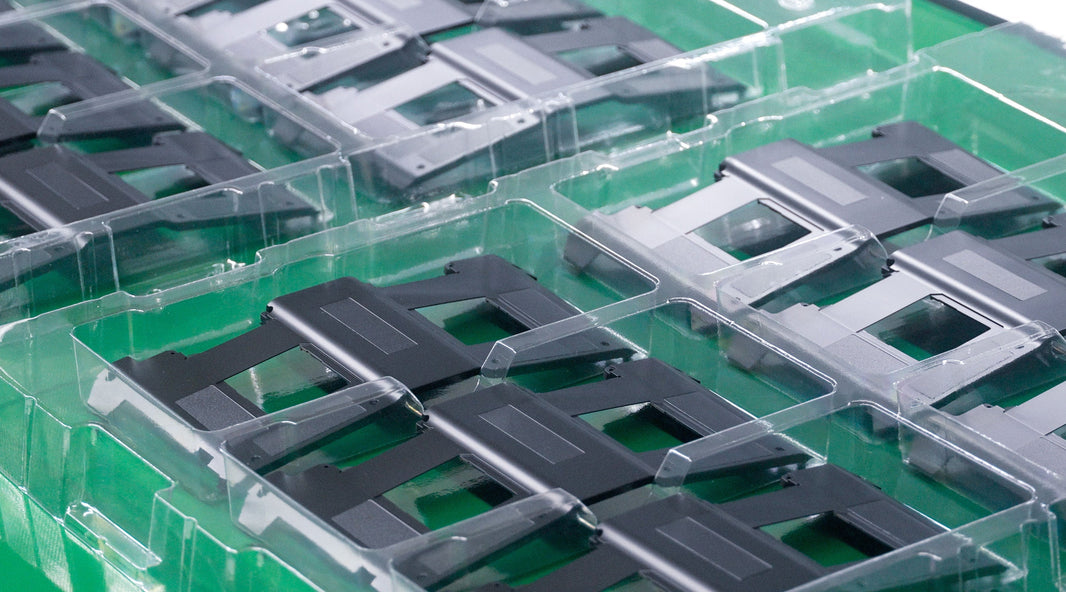Im Kontext der virtuellen Realität (VR) bezeichnet Pose Tracking den Prozess, bei dem die Bewegung und Position des Kopfes, der Hände und des Körpers des Benutzers genau erfasst werden, um ein realistisches und immersives Erlebnis zu schaffen. In der VR werden hauptsächlich zwei Tracking-Methoden verwendet: Outside-in-Tracking und Inside-out-Tracking .
Wir erläutern Ihnen folgende Aspekte:
- Was ist der Unterschied zwischen Outside-In- und Inside-Out-Tracking?
- Wie funktioniert VR-Tracking
- So wählen Sie Tracking-Methoden aus Inside-Out und Outside-In
- Beispiele zur Referenz
Was ist der Unterschied zwischen Outside-In- und Inside-Out-Tracking?
Der Hauptunterschied zwischen Outside-In- und Inside-Out-Tracking liegt in der Methode, mit der die Bewegungen des Benutzers in der virtuellen Realität (VR) erfasst und interpretiert werden.
Kurz gesagt, ihre Bedeutung lässt sich anhand des Titels und des obigen Bildes leicht verstehen. Outside-In-Tracking sind die externen Sensoren (wie Basisstationen), die um das VR-Headset herum angebracht werden, um die Bewegungen der Benutzer zu verfolgen. Inside-Out-Tracking sind die eingebetteten Sensoren (wie Kameras), die am Headset oder an den Controllern angebracht werden, um die Bewegungen der Benutzer zu verfolgen.
Und hier sind die wichtigsten Unterschiede:
|
Outside-In-Verfolgung |
Inside-Out-Verfolgung |
|
Externe Sensoren |
Sensorreferenzpunkte |
|
Sensorreferenzpunkte |
Umfeldanalyse |
|
Genauigkeit und Präzision |
Potenzial für reduzierte Okklusion |
|
Potenzial für reduzierte Okklusion |
Mögliche Tracking-Einschränkungen |
|
Größere Tracking-Bereiche |
Kostengünstige Lösung |
Outside-In-Verfolgung

Beim Outside-In-Tracking ist es offensichtlich, dass Outside-In-Tracking auf externe Sensoren oder Kameras angewiesen ist, die in der Umgebung platziert sind. Diese Sensoren verfolgen die Bewegung und Position von Markierungen oder Sensoren, die am Benutzer oder seinen VR-Geräten angebracht sind.
Zweitens bieten die externen Sensoren einen Referenzpunkt für die genaue Berechnung der Position und Bewegung des Benutzers. Durch Triangulation der Daten mehrerer Sensoren kann das System die Position und Orientierung des Benutzers im 3D-Raum bestimmen.
Drittens bieten Outside-In-Trackingsysteme aufgrund der Verwendung dedizierter Sensoren und spezieller Tracking-Algorithmen häufig eine hohe Genauigkeit und Präzision.
Viertens sind die Sensoren, da sie sich außerhalb des Benutzers befinden, weniger anfällig für Okklusionsprobleme , bei denen der Körper des Benutzers oder Gegenstände die Sichtlinie zwischen den Sensoren und den verfolgten Geräten blockieren.
Und schließlich kann das Outside-In-Tracking mit mehreren in der Umgebung platzierten Sensoren größere physische Räume abdecken und so VR im Raummaßstab ermöglichen.
Inside-Out-Verfolgung

Beim Inside-Out-Tracking ist bekannt, dass Sensoren verwendet werden, die in das VR-Headset oder die Controller eingebettet sind. Diese Sensoren, wie beispielsweise Kameras oder Infrarotsensoren, erfassen die Umgebung des Benutzers.
Zweitens analysieren Inside-Out-Tracking-Algorithmen die erfassten Daten, um die Position und Bewegung des Benutzers im Verhältnis zur Umgebung zu bestimmen. Zur Interpretation der Sensordaten werden Computer-Vision-Techniken , simultane Lokalisierung und Kartierung (SLAM) oder andere Methoden eingesetzt.
Drittens sind Inside-Out-Trackingsysteme in der Regel tragbarer und einfacher einzurichten, da sie keine externen Sensoren benötigen. Benutzer können Inside-Out-Trackingsysteme verwenden, indem sie einfach das VR-Headset aufsetzen.
Viertens kann Inside-Out-Tracking Einschränkungen bei der Verfolgung der Bewegungen des Benutzers außerhalb des Sichtfelds der eingebetteten Sensoren aufweisen. Auch das Verdecken der Hände oder Controller kann die Tracking-Genauigkeit vorübergehend beeinträchtigen.
Und schließlich ist Inside-Out-Tracking im Vergleich zu Outside-In-Tracking tendenziell kostengünstiger, da keine zusätzliche Sensorinfrastruktur erforderlich ist.
Es ist wichtig zu beachten, dass die spezifischen Fähigkeiten und Einschränkungen des Outside-In- und Inside-Out-Trackings je nach VR-System und Generation unterschiedlich sein können. Der technologische Fortschritt hat zu kontinuierlichen Verbesserungen bei beiden Tracking-Methoden geführt und bietet den Benutzern ein intensiveres und präziseres VR-Erlebnis.
Wie funktioniert VR-Tracking?
Outside-In-Verfolgung
- Sensor-Setup: Beim Outside-In-Tracking verwendet das VR-System externe Sensoren wie Kameras oder Infrarotsensoren, die strategisch in der Umgebung positioniert sind. Diese Sensoren dienen als Referenzpunkte und erfassen die Bewegungen und Positionen von Markierungen oder Sensoren, die am Benutzer oder seinen VR-Geräten angebracht sind. Sie können sich beispielsweise das Pimax 8KX-Setup ansehen, um herauszufinden, wie Sie die richtige Position der Basisstationen erreichen und wie Sie ein VR-Headset mit Outside-Tracking einrichten.
- Markierungserkennung: Die externen Sensoren erkennen und verfolgen die Markierungen oder Sensoren, die am Körper des Benutzers oder an VR-Geräten angebracht sind. Diese Markierungen können reflektierende Markierungen, LED-Markierungen oder andere identifizierbare Merkmale sein, die die Sensoren erkennen können.
- Datenverarbeitung: Die von den externen Sensoren erfassten Tracking-Daten werden zur Verarbeitung an einen Computer oder eine spezielle Tracking-Hardware gesendet. Mithilfe ausgefeilter Algorithmen und Triangulationstechniken werden die Daten analysiert und die genaue Position und Ausrichtung der verfolgten Markierungen im 3D-Raum bestimmt.
- Posenschätzung: Basierend auf den Positionen der verfolgten Markierungen und der bekannten Geometrie des VR-Setups kann das System die Position und Bewegung des Benutzers relativ zu den von den externen Sensoren bereitgestellten Referenzpunkten berechnen. Diese Informationen werden verwendet, um die Position und Ausrichtung der virtuellen Kamera zu aktualisieren und so eine realistische Darstellung der virtuellen Umgebung zu ermöglichen.
- Feedback und Interaktion: Die präzise verfolgten Benutzerbewegungen ermöglichen realistische Interaktionen innerhalb der VR-Umgebung. Das System kann Gesten, Handbewegungen oder Controllerpositionen erkennen, sodass der Benutzer mit virtuellen Objekten interagieren oder den virtuellen Raum manipulieren kann.
Inside-Out-Verfolgung
- Eingebettete Sensoren: Inside-Out-Tracking basiert auf Sensoren, die in das VR-Headset oder die Controller eingebettet sind. Diese Sensoren können Kameras, Infrarotsensoren oder andere spezielle Tracking-Technologien sein. Sie erfassen die Umgebung und Bewegungen des Benutzers direkt von den VR-Geräten.
- Umweltanalyse: Die erfassten Sensordaten werden mithilfe von Computer-Vision-Algorithmen, SLAM-Techniken (Simultaneous Localization and Mapping) oder anderen Methoden verarbeitet. Diese Algorithmen analysieren die visuellen oder Positionsinformationen der eingebetteten Sensoren, um die Bewegungen und die Umgebung des Benutzers zu interpretieren.
- Positionsbestimmung: Durch die Analyse der visuellen Eingabe oder mithilfe von SLAM-Algorithmen bestimmt das System die Position und Bewegung des Benutzers innerhalb der virtuellen Umgebung. Die erfassten Daten werden verwendet, um die Position und Ausrichtung der virtuellen Kamera zu aktualisieren und so eine genaue Darstellung der Bewegungen des Benutzers zu ermöglichen.
- Tracking-Einschränkungen: Inside-Out-Tracking kann bei der Verfolgung von Bewegungen außerhalb des Sichtfelds der eingebetteten Sensoren Einschränkungen aufweisen. Das Verdecken der Hände oder Controller kann die Tracking-Genauigkeit vorübergehend beeinträchtigen, da die Sensoren auf visuelle Eingaben angewiesen sind.
- Tragbarkeit und einfache Einrichtung: Inside-Out-Tracking bietet den Vorteil der Tragbarkeit und einfachen Einrichtung. Benutzer können einfach das VR-Headset aufsetzen oder die Controller in die Hand nehmen, und das Tracking-System beginnt zu arbeiten, ohne dass externe Sensoren oder Kalibrierung erforderlich sind.
So wählen Sie die Tracking-Methode zwischen Inside-Out und Outside-In
1. Umweltbedingungen und Platz
Von innen nach außen:
- Geeignete Umgebung: Ideal für kleine oder variable Umgebungen wie Wohnzimmer oder Büro. Da keine externen Sensoren erforderlich sind, bietet es mehr Flexibilität bei der räumlichen Gestaltung.
- Platzbedarf: Geringerer Platzbedarf, da keine externen Sensoren erforderlich sind. Kann in kleineren Bereichen eingesetzt werden.
Von außen nach innen:
- Geeignete Umgebung: Besser für Umgebungen mit viel Platz und stabilen Bedingungen, wie z. B. einen dedizierten VR-Raum oder ein Labor. Erfordert die Installation von Sensoren in den Ecken oder Wänden des Raums.
- Platzbedarf: Erfordert ausreichend Platz zum Installieren und Positionieren externer Sensoren.
2. Tracking-Genauigkeit und Stabilität
Von innen nach außen:
- Genauigkeit: Aufgrund der Abhängigkeit von integrierten Kameras und Sensoren kann unter bestimmten Bedingungen (z. B. bei schwachen Lichtverhältnissen oder komplexen visuellen Hintergründen) eine geringere Genauigkeit geboten werden.
- Stabilität: Kann durch Okklusion des Benutzers beeinträchtigt werden, wenn Hände oder Körper die Sicht der Sensoren blockieren können.
Von außen nach innen:
- Genauigkeit: Bietet im Allgemeinen eine höhere Genauigkeit, da externe Sensoren Daten aus mehreren Winkeln erfassen und so Okklusionsprobleme reduzieren.
- Stabilität: Bietet normalerweise eine stabilere Verfolgung, insbesondere in komplexen Umgebungen, da die Sensoren fest an ihrem Platz angebracht sind.
3. Installation und Wartung
Von innen nach außen:
- Einfache Installation: Es müssen keine externen Geräte im Raum installiert werden; die Einrichtung ist einfacher, da Sie nur das Headset oder die Controller konfigurieren und anpassen müssen.
- Wartung: Die Wartung ist einfacher und umfasst im Allgemeinen Software-Updates und Hardware-Wartung.
Von außen nach innen:
- Installationsaufwand: Erfordert die Installation von Sensoren im Raum, was die Montage an Wänden und Decken sowie die Verkabelung umfassen kann.
- Wartung: Die Wartung kann komplexer sein und Anpassungen und Überprüfungen der Sensorpositionen sowie die Behebung potenzieller Hardwareprobleme umfassen.
4. Mobilitätsfreiheit
Von innen nach außen:
- Flexibilität: Bietet mehr Bewegungsfreiheit, da die Sensoren in das Headset oder die Controller integriert sind und nicht durch externe Geräte eingeschränkt werden.
- Anpassungsfähigkeit: Benutzer können sich frei im Raum bewegen, ohne durch die Position der Sensoren eingeschränkt zu werden.
Von außen nach innen:
- Einschränkungen: Die Benutzerbewegung wird durch den Erfassungsbereich externer Sensoren eingeschränkt. Bewegungen zu weit von den Sensoren entfernt oder eine Sensorverdeckung können die Verfolgung beeinträchtigen.
- Anpassungsfähigkeit: Bei der Installation und Einrichtung muss der Aktivitätsbereich des Benutzers berücksichtigt werden, um eine Sensorabdeckung für alle erforderlichen Tracking-Bereiche sicherzustellen.
5. Budget und Kosten
Von innen nach außen:
- Anschaffungskosten: Normalerweise niedrigere Anschaffungskosten, da keine zusätzlichen externen Sensoren oder Kameras erforderlich sind.
- Langfristige Kosten: Möglicherweise ist mehr technischer Support und Wartung erforderlich, die Gesamtkosten sind jedoch überschaubarer.
Von außen nach innen:
- Anschaffungskosten: Möglicherweise höhere Anschaffungskosten aufgrund der Notwendigkeit zusätzlicher Sensoren und Installation.
- Langfristige Kosten: Aufgrund der Abnutzung externer Geräte können die Wartungs- und Ersatzkosten höher sein.
Abschluss
Die Wahl zwischen Inside-Out- und Outside-In- Tracking-Methoden hängt weitgehend von Ihren spezifischen Anforderungen und Bedingungen ab:
- Wenn Sie eine flexible, praktische Einrichtung mit größerer Mobilität benötigen und in einer kleineren oder komplexeren Umgebung arbeiten, ist Inside-Out-Tracking möglicherweise besser geeignet.
- Wenn für Sie hohe Genauigkeit und Stabilität wichtig sind und Sie einen komplexeren Installationsprozess mit potenziellen Platzbeschränkungen bewältigen können, ist das Outside-In-Tracking möglicherweise die bessere Option.
Beispiele zur Referenz
| Headset | Tracking-Methode | Auflösung | Sichtfeld | Preis ($) |
| Pimax Kristalllicht | Von innen nach außen und von außen nach innen | 2880 x 2880 pro Auge | 130° | 899 $ |
| Pimax 8KX | Von außen nach innen | 3840 x 2160 pro Auge | 200° | 1.387 $ |
| Oculus Rift S | Von innen nach außen | 1280 x 1440 pro Auge | 115° | 399 $ |
| HTC Vive Pro | Von außen nach innen | 1440 x 1600 pro Auge | 110° | 1.399 US-Dollar |
| Ventilindex | Von außen nach innen | 1440 x 1600 pro Auge | 130° | 999 US-Dollar |
| PlayStation VR | Von außen nach innen | 960 x 1080 pro Auge | 100° | Ab $399 |
| Oculus Quest 2 | Von innen nach außen | 1832 x 1920 pro Auge | 100° | Ab $299 |
| HP Reverb G2 | Von innen nach außen | 2160 x 2160 pro Auge | 114° | 599 $ |
Vielen Dank fürs Lesen. Wenn Sie sich für Pimax Crystal Light oder verwandte VR-Kenntnisse interessieren, besuchen Sie uns gerne auf unserem Discord-Kanal .
Für Videos Erklärung
Das könnte Ihnen gefallen:
Ein VR-Headset als Monitor verwenden
Die 5 besten VR-Tipps und Tricks | Pimax
Was ist Virtual-Reality-Krankheit und wie bekämpft man sie? | Pimax
Was ist lokales Dimmen in VR? | Pimax
Was ist der Fliegengittereffekt in VR? | Pimax
Ist mein PC bereit für VR? | Pimax







